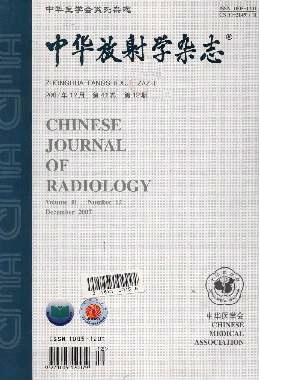The effect of bedside chest radiograph in the diagnosis and follow-up ofsevereand criticalCOVID-19
Q4 Medicine
Zhonghua fang she xue za zhi Chinese journal of radiology
Pub Date : 2020-03-12
DOI:10.3760/CMA.J.ISSN.1005-1201.2020.0018
引用次数: 0
Abstract
Objective To explore the value of bedside chest radiograph in the diagnosis and follow-up of severe and critical COVID-19, and to improve the effect of bedside chest radiograph in the prevention and treatment of critical COVID-19. Methods Twenty-nine patients with COVID-19 were collected from January 23to February 23, 2020, fromfourCOVID-19 designated hospitals in Guangdong Province,which were clinically diagnosed as severe or critical COVID-19.Bedside radiography was taken in all the 29 patients, and thetotal number ranged from 1 to 16 times. Twenty-sevenpatients underwent follow-up, and the number of re-examination ranged 1 to 15 times, and the interval of review is 1 to 8 days.The imaging findings of bedside chest radiography and the imaging changes of follow-up were analyzed retrospectively. Results Twenty-nine patients were collected. The radiography showed the distribution of lesions was all more than 3 lung fields. Among them, 6 lung fields were found in 8 cases, 5 lung fields in 8 cases, 4 lung fields in 7 cases, 3 lung fields in 6 cases. The films showed consolidation shadow in 19 cases, multiple patches shadow in 23 cases, reticular pattern in 12 cases, strips shadow in 14 cases, interlobar fissure thickening in 18 cases, and "white lung" in 4 cases.The complications included pleural effusion in 4 cases, pneumothorax in 2 cases, mediastinal and subcutaneous emphysema in 1 case. The radiography showed the lesions increased in 15 cases, mainly showing the range of original lesions was enlarged, the density increasing in 6 cases, new lesionsfound in 5 cases, andboth of them found in 4 cases.Decreased in 9 cases, showing the range of lesions was reduced and the density was reduced. 8 cases showed patchy or consolidation shadow turned to strips shadow or articular pattern shadow.No significant change in 3 casesshowed large consolidation shadow. Conclusions Bedside chest radiography has a good value in the follow-up of severely and critically ill patients with COVID-19, and can provide great help for clinicians to evaluate their condition. Key words: COVID-19; Radiography床边胸片在重症、危重型新冠肺炎诊断及随访中的作用
目的探讨床边放射线在重症和危重症新冠肺炎诊断和随访中的价值,提高床边放射线对危重症新冠肺炎的防治效果。方法收集2020年1月23日至2月23日广东省4家新冠肺炎定点医院临床诊断为重症或危重症的20例新冠肺炎患者,对29例患者进行双侧放射线检查,总次数为1-16次。27名患者接受了随访,复查次数为1至15次,复查间隔为1至8天。回顾性分析床边胸部x线摄影的影像学表现及随访的影像学变化。结果收集患者29例。X线片显示病变分布均在3个肺野以上。其中,6个肺野8例,5个肺野5例,4个肺野7例,3个肺野6例。片中实变影19例,多片影23例,网状影12例,条形影14例,叶间裂增厚18例,“白肺”4例。并发症包括胸腔积液4例,肺气肿2例,纵隔及皮下气肿1例。X线片显示病变增加15例,主要表现为原发病变范围扩大,密度增加6例,新发病变5例,两者均有4例。减少9例,显示病变范围缩小,密度降低。8例呈片状或实变影,转为条状影或关节型影。3例无明显变化,出现较大合并阴影。结论床旁胸部造影对新冠肺炎危重症患者的随访有良好价值,可为临床医生评估病情提供重要帮助。关键词:新冠肺炎;射线照相术
本文章由计算机程序翻译,如有差异,请以英文原文为准。
求助全文
约1分钟内获得全文
求助全文
来源期刊

Zhonghua fang she xue za zhi Chinese journal of radiology
Medicine-Radiology, Nuclear Medicine and Imaging
CiteScore
0.30
自引率
0.00%
发文量
10639
 求助内容:
求助内容: 应助结果提醒方式:
应助结果提醒方式:


